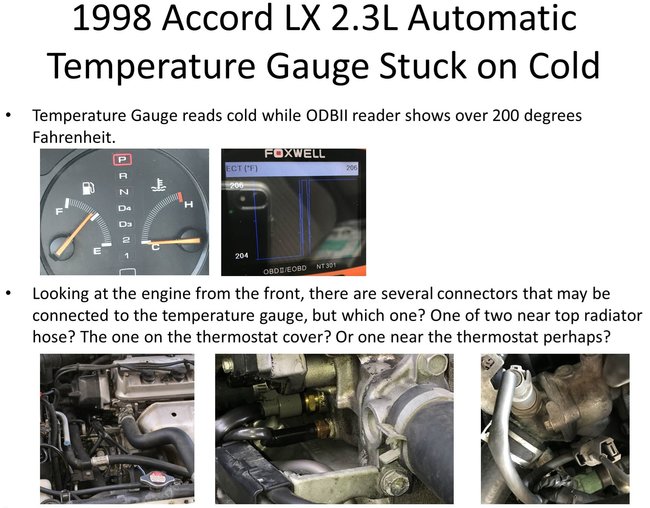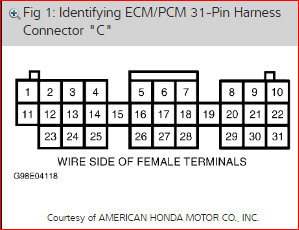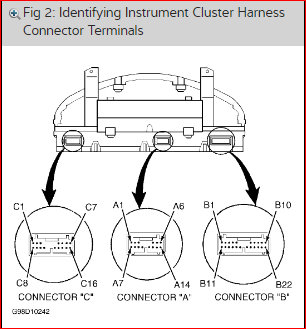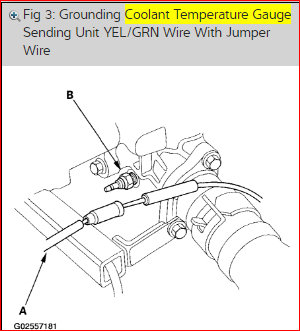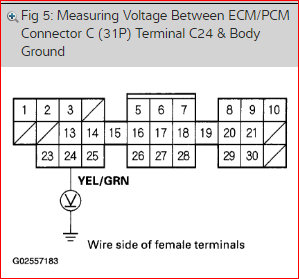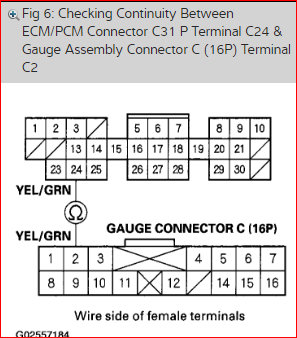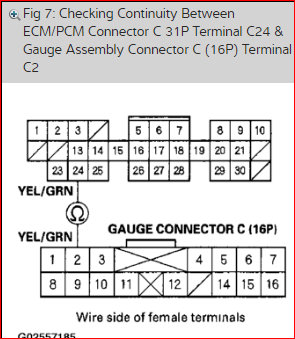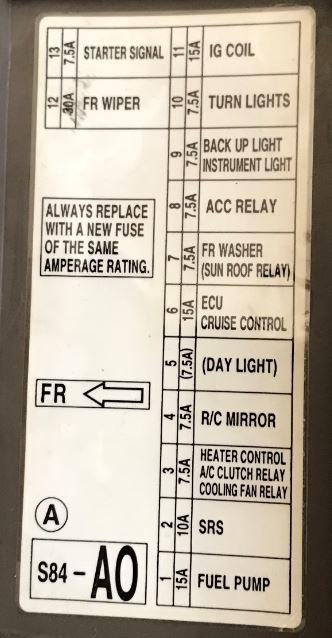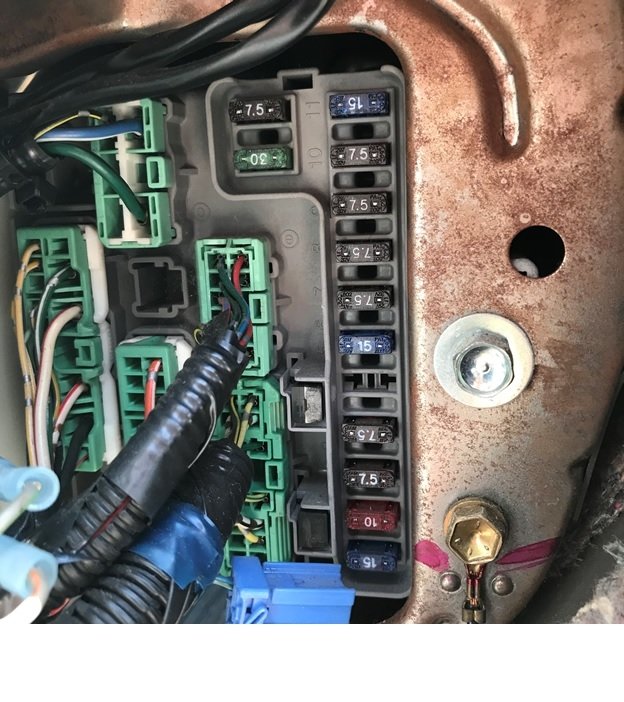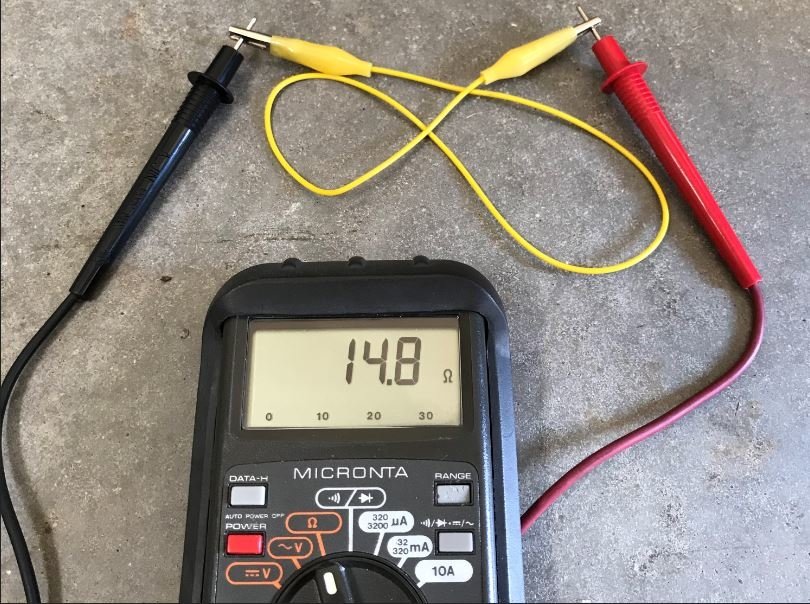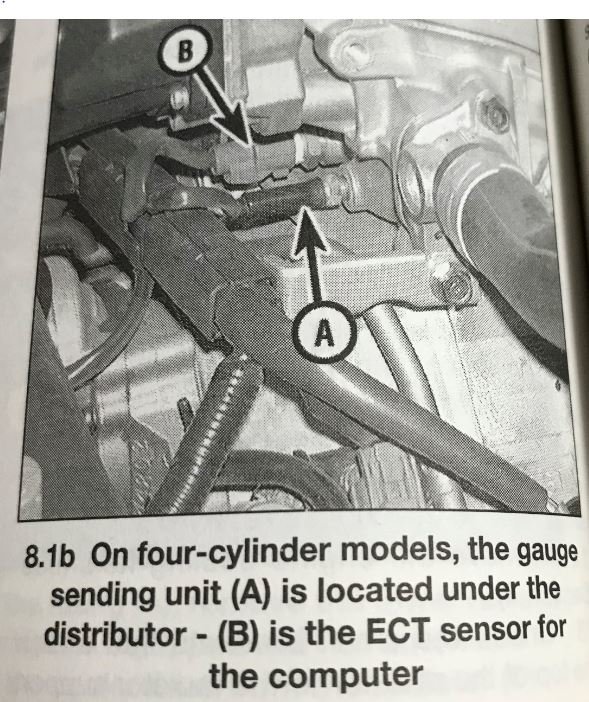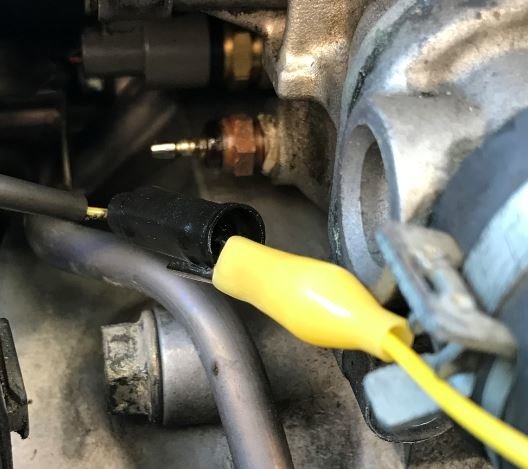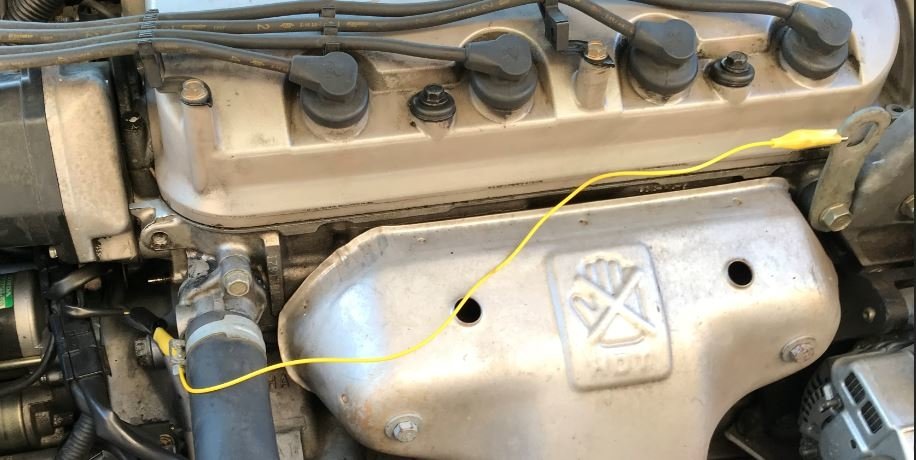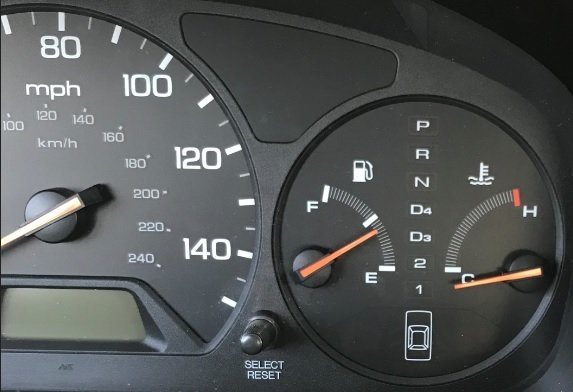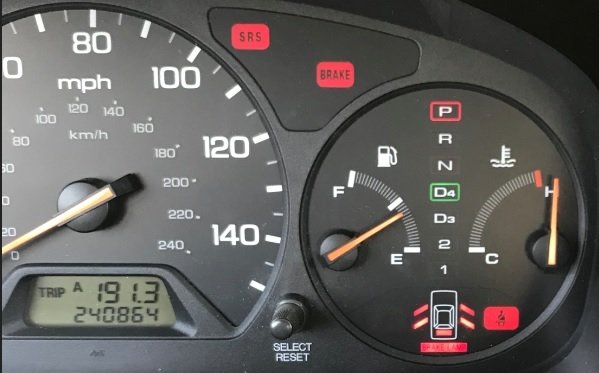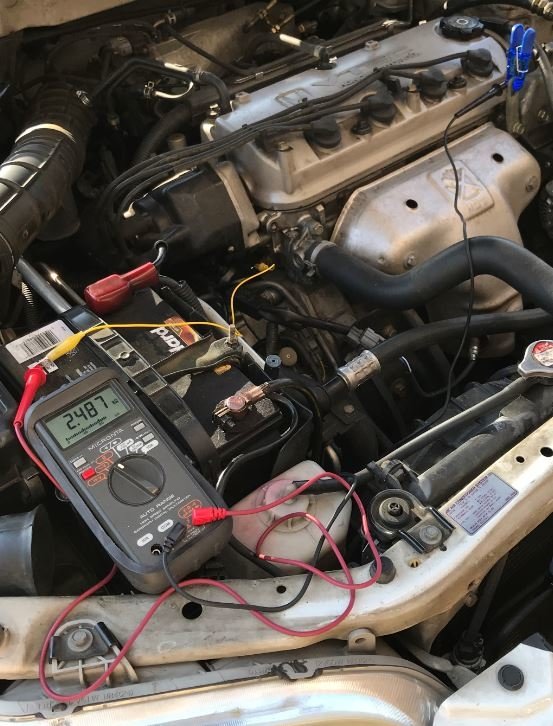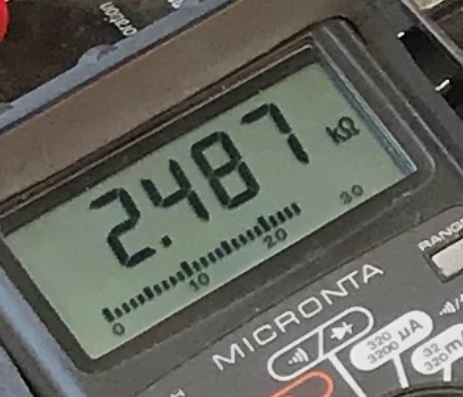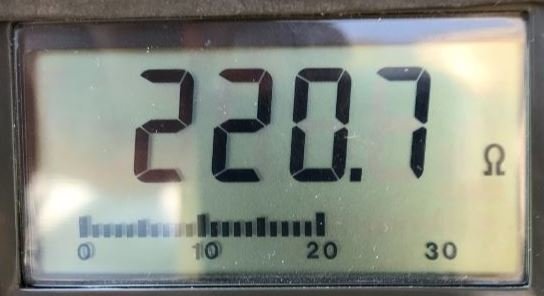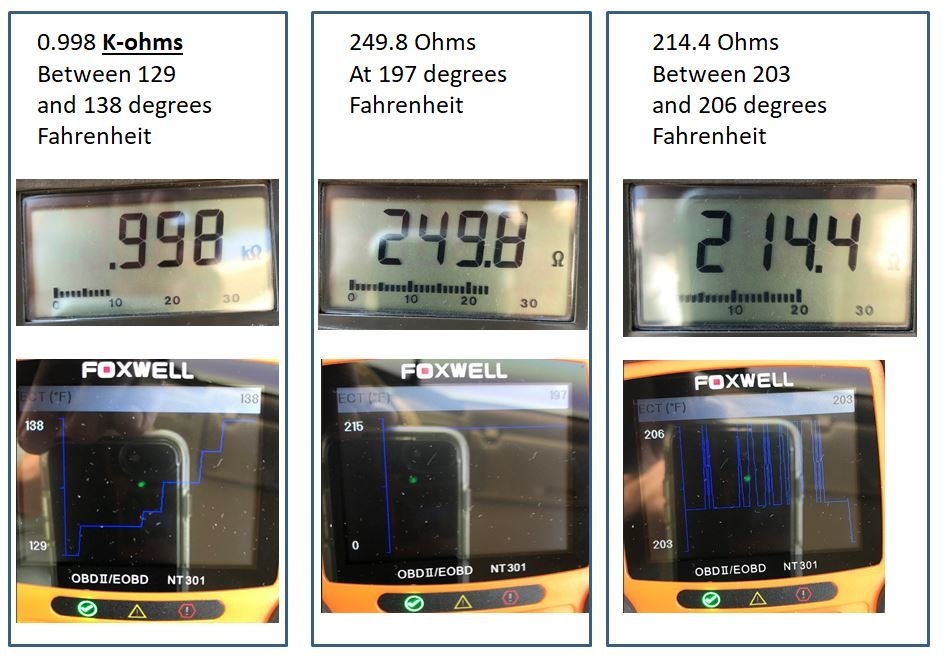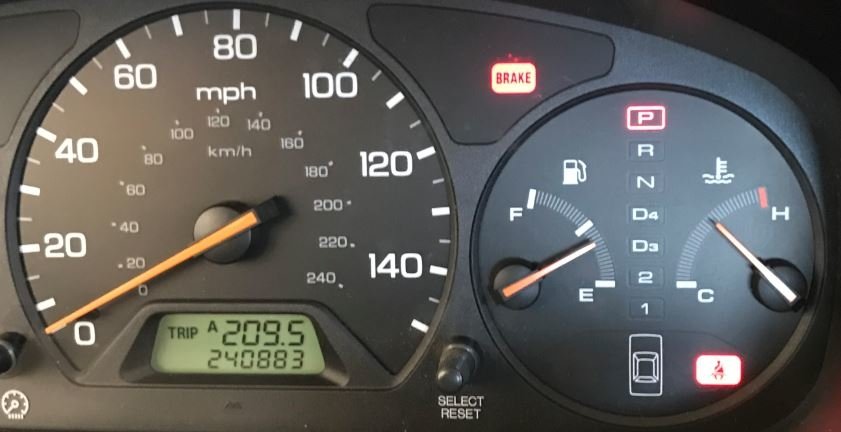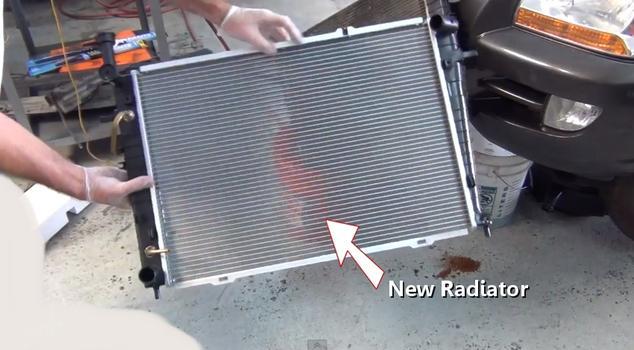I connected an OBD II reader to the car and monitored the engine coolant temperature (ECT). The temperature stayed at around 195 degrees while parked, but before driving.
There are two cooling fans behind the radiator. Both fans come on when the A/C is turned on, and both fans turn off when the A/C is turned off.
I expected the fan on the passenger side of the car to come on if the ECT reached a high enough temperature, but that never happened while the car was sitting in the driveway. I wondered if the sensor driving the fan might be the same one that drives the temperature gauge that is not working.
I drove the car with the A/C turned on in an ambient temperature range of 88 to 90 degrees Fahrenheit. I used the OBD II reader to monitor the ECT while driving. It plots the data, with a new sample data reading every few seconds. The car seemed to stay around 195 degrees while driving, perhaps getting up to 197 climbing a hill. It got as high as 204 to 206 degrees when stopped at a light. I could not tell if the fan ever came on while driving. I parked the car and turned off the engine, then turned the key to the on position without starting the engine. The temperature continued to rise. It got to 215 and the fan came on (with the A/C turned off). That seems higher than I would have expected, but the fan did come on, so if the same sensor drives the temperature gauge and the fan switch, the sensor seems to be working.
A Honda dealer told me that it was the gauge.
How can I figure this out and get the temperature gauge working?
Sunday, July 1st, 2018 AT 3:25 PM
